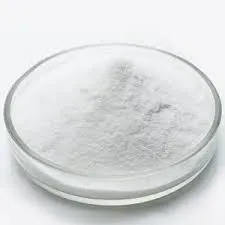
Dec . 04, 2024 22:36 Back to list
Exploring the Diverse Applications of HPMC in Modern Industries and Product Development
Exploring the Applications of HPMC in Modern Industries
Hydroxypropyl Methylcellulose (HPMC) is a versatile, water-soluble polymer derived from cellulose, renowned for its multiplicity of applications across various industries. Its unique properties—including biocompatibility, non-toxicity, and ability to form films—make it an essential ingredient in pharmaceuticals, construction, food, and cosmetics.
Pharmaceutical Applications
One of the most prominent uses of HPMC is in the pharmaceutical industry. It serves as a binder, disintegrant, and controlled-release agent in tablet formulations. When used in tablets, HPMC provides a stable matrix, ensuring the even distribution of active ingredients. Its film-forming capabilities further enhance drug delivery systems, allowing for a controlled release of the medication in the body. Additionally, HPMC is often employed in ophthalmic solutions, providing viscosity and clarity, which are critical for effective eye care products.
Construction Industry Usage
The construction sector has also recognized the advantages of HPMC. It is commonly used as a thickening and water retention agent in cement-based products, such as mortar and plasters. By enhancing workability and adhesion, HPMC improves the performance of construction materials. Its water-retaining properties facilitate prolonged workability, making it easier to apply and manipulate plaster and tile adhesives. Furthermore, HPMC contributes to the durability and strength of construction materials, which is vital for sustainable building practices.
hpmc applications

Food Industry Applications
In the food industry, HPMC is utilized as a thickening agent and stabilizer. Its ability to form gels makes it popular in various food products, such as salad dressings, sauces, and ice creams, where it improves texture and mouthfeel. HPMC is also used as a fat replacer in reduced-fat formulations, offering a creamy texture without the added calories. Additionally, its role as a dietary fiber enhances the nutritional profile of processed foods, aligning with the increasing consumer demand for healthier options.
Cosmetic Applications
The cosmetic industry counts on HPMC for its emulsifying and stabilizing properties. It is often included in lotions, creams, and gels, where it helps to maintain a uniform consistency and prevents the separation of ingredients. HPMC's film-forming ability also makes it a popular choice in hair care products, providing a lightweight hold and enhancing the shine of hair. Moreover, its moisturizing properties are leveraged in skincare formulations, promoting hydration without leaving a greasy residue.
Conclusion
The versatility of Hydroxypropyl Methylcellulose makes it a valuable component in various industries. Its wide range of applications, from pharmaceuticals to food and cosmetics, exemplifies its importance in enhancing product performance and consumer experience. As research and development continue, we can expect HPMC to play an increasingly significant role in innovative solutions across multiple sectors. The ongoing quest for sustainable, effective, and multifunctional ingredients assures that HPMC will remain a key player in the future of product formulation and development. With its extensive adaptability, HPMC is indeed a polyfunctional polymer shaping the landscape of modern industries.
-
Versatile Hpmc Uses in Different Industries
NewsJun.19,2025
-
Redispersible Powder's Role in Enhancing Durability of Construction Products
NewsJun.19,2025
-
Hydroxyethyl Cellulose Applications Driving Green Industrial Processes
NewsJun.19,2025
-
Exploring Different Redispersible Polymer Powder
NewsJun.19,2025
-
Choosing the Right Mortar Bonding Agent
NewsJun.19,2025
-
Applications and Significance of China Hpmc in Modern Industries
NewsJun.19,2025







